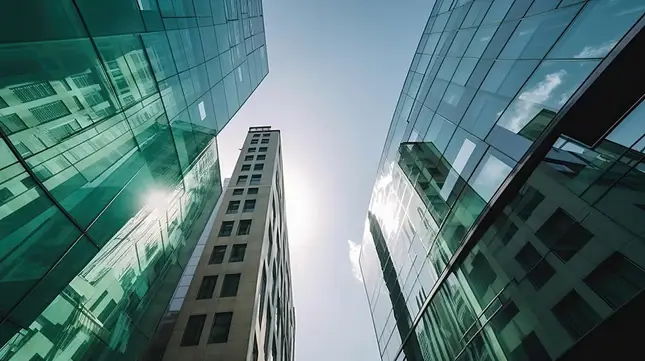Our experienced team can provide you with a Circular Economy Statement to ensure your project complies with the requirements of the London Plan.
What is a Circular Economy Statement?
A Circular Economy Statement (CES) is used to demonstrate that steps are being taken by the developer to ensure the long-term sustainability of their project. The CES outlines how materials, resources, and infrastructure will be reused or recycled to reduce environmental impact and provide ongoing economic benefits.
The Circular Economy Statement includes both short-term programmes and plans for future development. The aim of a CES is to promote responsible stewardship of the built environment while also creating financial value.

What is a Circular Economy?
A circular economy is an economic system that aims to reduce waste and eliminate the use of natural resources by focusing on resource efficiency through reuse, repair, remanufacture, and recycling.
Circular economy initiatives encourage the development of green infrastructure, renewable energy sources, efficient transportation solutions, and smart city technologies for better resource management.
Having a Circular Economy Statement in place can give you a significant return on investment through increased efficiency in design and construction processes. This includes optimised use of space, better utilisation of natural resources, and reduced waste management costs due to decreased material needs.

By introducing circular concepts into your building construction projects, you can unlock new revenue streams, for example, selling second-hand materials or leasing equipment. This can help cushion your business against future economic uncertainty and form part of your wider business resilience strategy.
Other benefits include:
- Boosts your reputation, helping you attract customers and investors.
- Saves costs through more efficient use of energy and materials.
- Supports wider sustainability goals like carbon reduction.
- Reduces environmental damage and resource depletion.
Circular Economy Sustainability
The circular economy is a concept that promotes sustainability by creating a closed-loop system where materials are kept cycling within the same production systems so they can be reused. This principle applies to materials and other aspects, including energy, water, and land use.
By embracing this model of economic growth, environmental damage from the overuse or misuse of finite resources can be reduced or eliminated
Initiatives based on this approach encourage:
- The development of green infrastructure
- Use of renewable energy sources
- More efficient transportation solutions
- Smart city technologies
- Better resource management
Linear Economy vs Circular Economy
Transitioning from a linear to a circular economy is essential for achieving a sustainable future.
A linear economy is a “take-make-waste” system, where resources are taken from the environment to make products and then discarded once they have served their purpose. In contrast, a circular economy is founded on the principles of sustainability, with an aim to keep materials within a closed loop for as long as possible.
- Resources extracted from nature for production and disposed of after use.
- Maximises economic growth and consumption in the short term.
- Dependent on large-scale exploitation of natural resources.
- Wasteful by nature, resulting in high levels of waste and pollution.
- Encourages short-term thinking with minimal regard for the environment.
- Resources recovered and reused in multiple life cycles before disposal.
- Promotes long-term economic stability by using resources more efficiently.
- Reduces dependence on natural resources and promotes sustainable practices.
- Minimises waste, as products are designed to be reused or recycled.
- Prioritises long-term sustainability and environmental stewardship.
By embracing a circular approach and providing a Circular Economy Statement, your business will be better prepared to face the challenges of tomorrow while achieving economic gains today.
